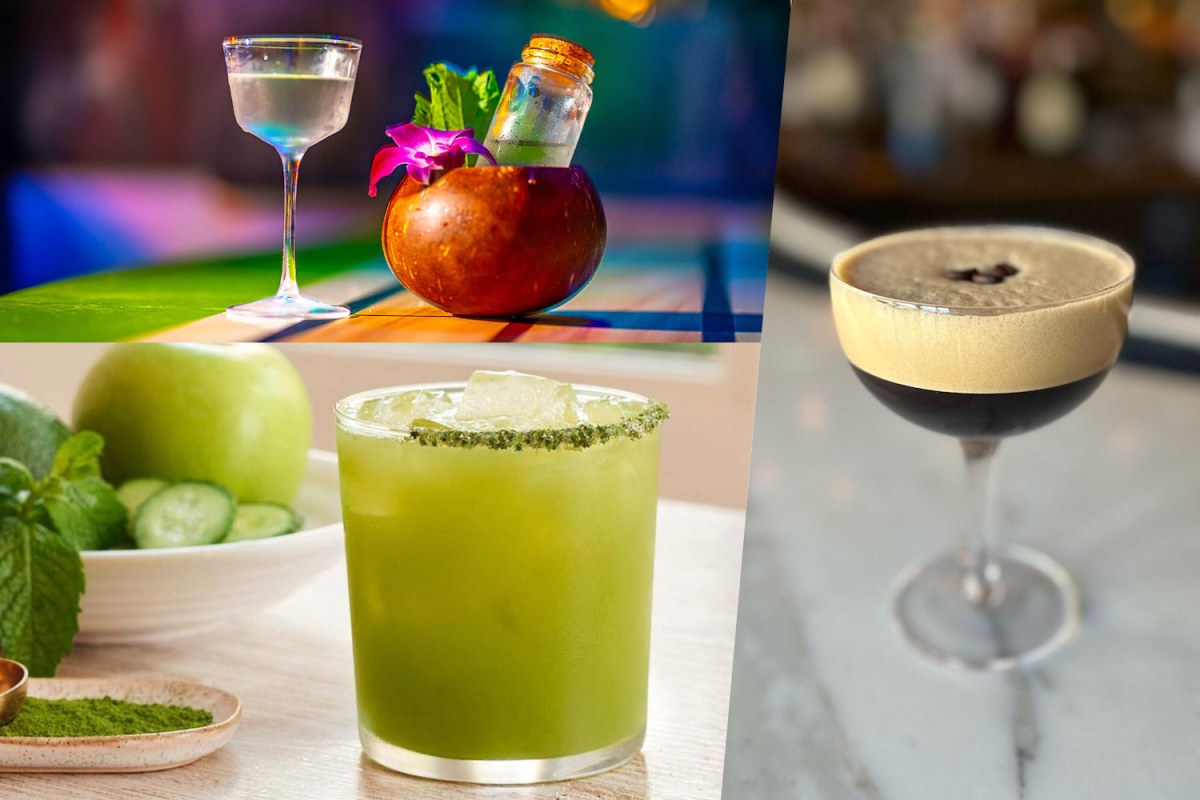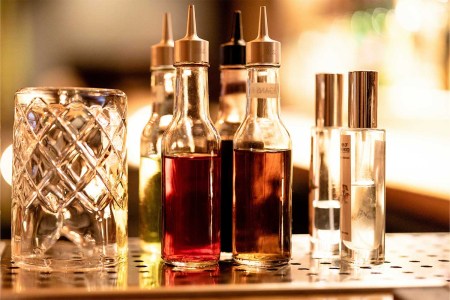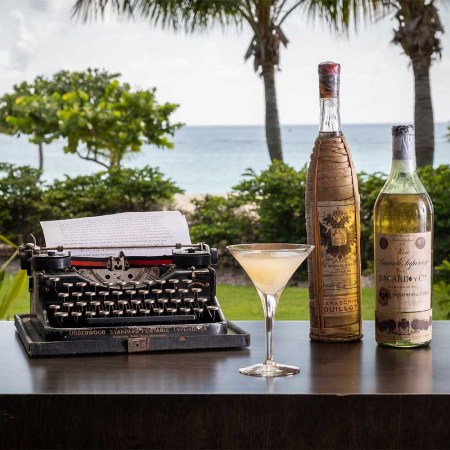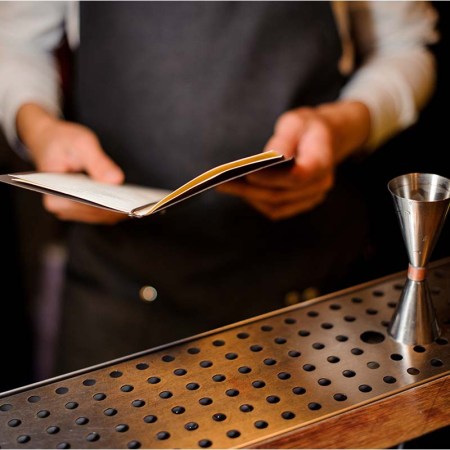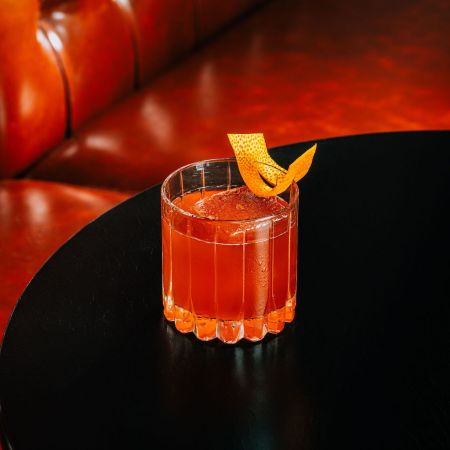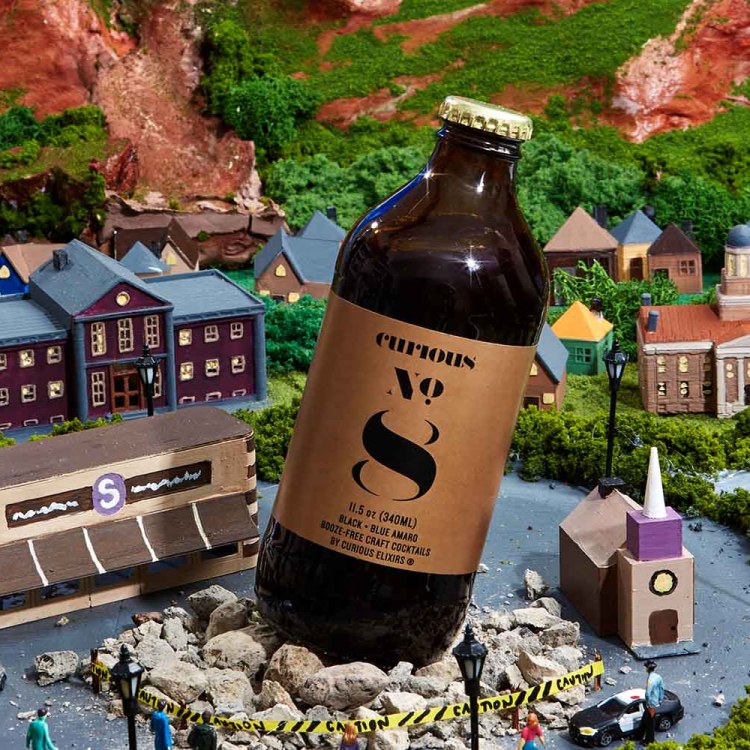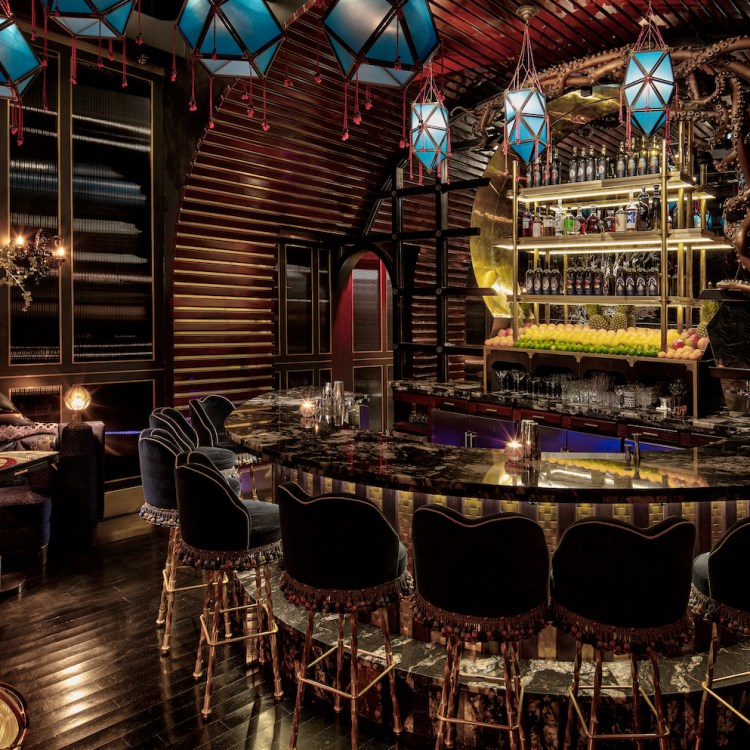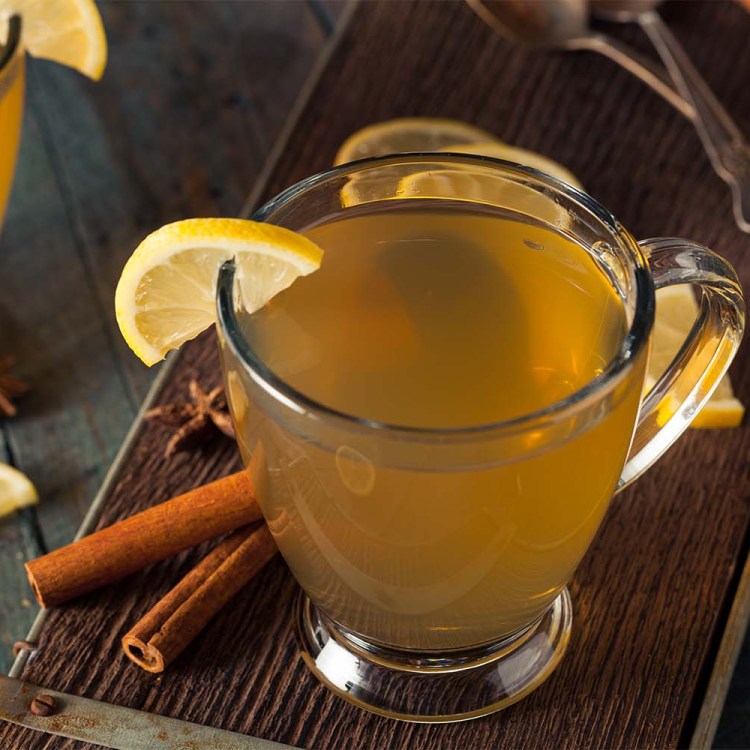The Espresso Martini has hogged the throne long enough — it’s time to make room for other drinks incorporating ingredients found at the cafe. Drinkers are becoming increasingly intrigued these flavors, and bartenders are taking note, too. Some are seeking recipes that are a little less high-maintenance than the Espresso Martini, while even more are inspired by the wide range of flavors available in coffee and tea. They’ve existed long before the Espresso Martini’s most recent resurgence, after all — now they’ve just been given a bigger stage and a brighter spotlight.
Tea has a long history as a boozy bedfellow. It was a common ingredient in the ancestor of punch, popularized in the 17th century, and modern bartenders have continued to use it in their large format recipes. The Earl Grey MarTEAni, developed by Audrey Saunders in the aughts at Pegu Club in New York City, was an early example within modern cocktail culture. Since then, tea has gained traction on menus to the extent that rare tea vendors cater to elite bars.
As for the coffee side of the equation, today’s interest is built on a history not quite as long but substantial all the same. Irish coffee has been around since the 1940s, thanks to Limerick, Ireland-based chef Joe Sheridan, and the simple recipe has been riffed on ever since. The Espresso Martini hit the scene in 1983, and its return to glory came as people celebrated the reopening of bars after pandemic lockdowns.
“Nostalgia drove the renaissance of the Espresso Martini and, along with the continued coffee revolution, more consumers are interested in coffee cocktails,” says Jennifer Creevy, food and drink director of trend forecasting and analytics firm WGSN. “While the Espresso Martini remains popular, the opportunities for innovation around coffee cocktails are huge. Innovators are delivering twists on coffee cocktails with new processes, terroir-driven ingredients, bold spices and global flavors.”
As for tea, Creevy adds that bartenders and brands have been blending different varieties with fruits, herbs and other botanicals to create more complex flavor profiles. “Singapore-based Anthology’s Teh-groni is made by cold-brewing rum with an artisanal blend of tea for 24 hours, for example,” she says.
Both coffee and tea are helping bartenders keep up with consumers’ ever-present curiosity for different flavors and aromas in their drinks, bringing characteristics to cocktails that are both comfortingly familiar but adventurously novel in adult-beverage form. Especially as the newest generation of legal imbibers proves to value flavor over things like category or style, this combination is effectively engaging. Coffee and tea are also key players in the expansion and evolution of low- and no-alcohol beverages. They bring complexity, sweetness, bitterness and mouthfeel to drinks that might otherwise feel flat sans booze.
A Home Bartender’s Guide to Cocktail Bitters
It’s about so much more than AngosturaTea Time
The modern tea cocktail has been shaped and popularized in the hands of renowned mixology masters, like Julia Momosé, partner and creative director at acclaimed Japanese dining bar Kumiko in Chicago. The fare at Kumiko and Momosé’s own roots inspire an authentic and organic approach to incorporating tea in cocktails. Take her Silver Chawari, a shochu highball. “Chawari” is a traditional Japanese way to serve shochu — “cha” meaning “tea” — and the cocktail includes Japanese green tea. At Kumiko, the Moonrise Daiquiri combines roasted Japanese green tea hojicha with junmai ginjo saké, aged rum, demerara, lime and Angostura bitters.
A similar cultural throughline manifests at New York City Japanese restaurant Nami Nori. Of the Matcharita — which consists of matcha, green apple, mint, cucumber and soju — Nami Nori partner Lisa Lamb says, “Matcha is special to Japanese culture. The tea ceremony, which is the service of matcha, is the origin of Japan’s ‘omotenashi,’ or ‘art of hospitality,’ so we wanted to highlight matcha in this cocktail.”
The time-honored service of tea has also inspired cocktails at The NoMad London, where bar director Liana Oster developed a repertoire of drinks for the hotel’s renowned afternoon tea. Offerings like the Honeybush Negroni with honeybush tea and the Nod to Nothing with jasmine tea are ways to highlight the full range of tea’s flavor potential and show guests how it can express itself both with and without alcohol.
In terms of how to actually incorporate tea successfully, there’s a balancing act involved. “[I am] careful when infusing tea into spirits, and brewing in general, as tannin can ruin a cocktail,” Momosé says. “Alcohol can heighten the sensation of it, so I do recommend testing in small batches to find the right ratio of time and temperature for steeping.”
Oster considers the varying flavor profiles of different blends, appellations, leaves, and what spirits and other ingredients they’d complement. “How you choose to steep your tea, as well, will have an impact on the flavor, whether you do a hot or cold brew infusion,” she says. “Aroma plays a large part; typically you would expect to get more from hot infusions and from either herbal or white teas that typically have higher concentrated aromatics.”
Oster adds these teas to syrups to maximize those aromas and says that roasted teas (like black or green) are successful when infused into spirits or other liquids. She creates an Earl Grey fat-washed tequila and a genmaicha yogurt syrup.
At Enswell in Philadelphia, the cocktail menu benefits from the fact that founders Jonathan Adams and Damien Pileggi are also the founders of Rival Bros. Coffee. Adams says that despite a growing proliferation of quality coffee and tea products for cocktails, they make infusions and syrups in-house from their own coffees and teas to control the outcome and give their beverage program a bespoke flavor. They incorporate African vanilla rooibos into their Good Hope Gimlet and Earl Grey into the nonalcoholic Kyoto Fog.
“Whether you are infusing a spirit, making syrup or adding tea as dilution for a frozen or batched spirit-forward cocktail, it is a means to deliver added flavor to a cocktail in a thoughtful way,” says Ray Sakover, founder and head bartender at NYC’s Paradise Lost. “If you want bold flavors, you can do an infusion in your base spirit or you can steep the tea in hot water and make a syrup. If you want to extract softer, more subtle notes, you can make a cold brew in room-temperature water by steeping tea overnight and making a syrup by adding equal parts white sugar.”
Tea brings complexity to Sakover’s modern tiki-style drinks, like Lady of the Beast with Persian black ceylon tea-infused gin and the Lesser Key Martini with matcha-infused gin (Sakover especially appreciates the way tea complements gin’s botanicals). Tea is another way for bartenders like Sakover to get creative — he’s been using tea in his cocktails since he started making drinks.
Cup of Joe — and a Little Booze, Too
Coffee cocktails strike a similar chord. The marriage of coffee and alcohol is certainly not new or novel, but coffee does promise its own roasty, chocolatey, nutty flavor profile that’s especially in-demand as of late. Based on the Espresso Martini’s popularity, many began lobbying for the Carajillo, a more low-key way to achieve that flavor. More recently revived with gusto in Mexico, this equal parts coffee and Licor 43 (a liqueur with notes of vanilla and citrus) drink derives from a Spanish tradition of coffee-spiking. In that way, the Carajillo is like a cousin of Irish coffee, another long-standing, simple staple now experiencing revived interest and attention at destination bars. New York’s The Dead Rabbit, itself a fusion of influential cocktail bar and authentic Irish pub, has an entire Irish coffee menu.
“[Owners Jack McGarry and Sean Muldoon] always believed it was an imperfect cocktail with potential,” says Dead Rabbit head bartender Ian Alexander. McGarry and Muldoon enlisted cocktail expert Dale DeGroff to take their recipe to a level they were happy with, one that honors the drink’s history while incorporating subtle updates and flavor twists. “The coffee drinks that have achieved ‘classic status’ have not, and should not, completely change their identity,” Alexander says. “Our guests have always loved The Dead Rabbit Irish Coffee because it consistently delivers what you expect and need.”
Think of coffee cocktails today as classics getting what Alexander calls a “glow-up,” referring to thoughtful tweaks like The Dead Rabbit’s Espresso Martini, the Irish Espresso Martini, which subs Irish whiskey for the vodka. Similarly, Brooklyn’s Le Fanfare has an Italian riff on the beloved java tipple. “We incorporate amaro and freshly brewed Italian roasted espresso, as well as bourbon and vodka, for balance and an herbaceous profile,” says Head Bartender Carlos Garci.
Just like with tea, coffee can go into a cocktail via multiple forms, all depending on how intense the desired flavor is and whether it’s, say, some bitter roastiness versus chocolatey sweetness that’s desired. There’s the straightforward addition of coffee or espresso, à la Irish Coffee and Espresso Martinis. There are syrups, like what Adams and Pileggi make at Enswell, and as an Espresso Martini component, there’s a whole selection of coffee liqueurs. Adams recommends another source, too. “Making coffee bitters in-house allows the addition of concentrated coffee wherever you want it placed,” he says.
Cold-brewed teas and coffee liqueurs make it easy to experiment with this trend at home, and thanks to what Garcia calls coffee and tea’s “endless potential for creativity” for mixologists, we can expect to see these cocktails continue to thrive on menus across the country. After all, the cafe thirst exists in the cocktail bar, too. “Consumers are looking beyond traditional spirit-forward drinks,” Garcia says. “This shift suggests a desire for complexity, sophistication and a willingness to embrace nontraditional ingredients in the pursuit of unique drinking experiences.”
Every Thursday, our resident experts see to it that you’re up to date on the latest from the world of drinks. Trend reports, bottle reviews, cocktail recipes and more. Sign up for THE SPILL now.
